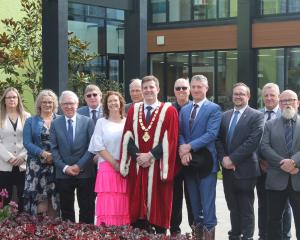
There is an elephant in the room when it comes to the Southland District Council election.
It is not water — waste, storm or drinking water. Nor is it roads — though the council has 5000km of them. Rates — they are going up though not as much as many other councils have imposed in the past few years.
They are all important things but the issue that may not be front and centre for many but could be the most far-reaching for the council is the possibility it could be the last election in which people vote for the district as its sits at the moment.
Southland District Mayor Rob Scott came out about a year ago with a proposal to merge the four Southland councils, saying it would save money, lead to an efficient sharing of resources and actually bring power back to the communities. There were lukewarm responses from the other three councils and the subject is now being considered by the Local Government Commission.
Through his leading of the merger plan, where four councils would become two, the Southland district is seen as the one which is so ardently supportive of it.
But if Mr Scott gets voted out, is that a signal the voters of the Southland district do not support the amalgamation plan?
Mr Scott would hope not and that people would be positive about the changes and the benefits they would bring.
This though is local politics where people sometimes look across the border and do not like what they see, or see the negatives a bit too easily. Or, think those across the fence can stay in their patch.
Mr Scott was a new mayor three years ago, tipping over incumbent Gary Tong who finished third behind farmer Geoff Young. There were only 45 votes between the three candidates.
This time around Wendy Baker and Mr Tong will contest the mayoralty with Mr Scott.
Mr Scott has got the Stewart Island solar farm proposal well along the road and it is hoped construction will start by the end of the year.
The council is remaining with the status quo with its water delivery, going in-house — all done with a minimum of fuss. The rates rise this year is 7.3%, which is above inflation but well below those of councils around it.
Then there are the roads and bridges across the large district. The burden of keeping the roads usable is tough. The average Southland resident is responsible for the cost of 151m of road compared with 4m for every Aucklander.
Bridges are used on many of these roads and there are more than 800 of them in the Southland district — many of which are on their last legs.
With shrinking government funding and changes nationally to road charges it may be a rocky road to keep all the thoroughfares and bridges open.
The economies of scale brought about by the merging of councils should help road maintenance.
Maybe that will win Mr Scott the election and give his amalgamation campaign a boost.












